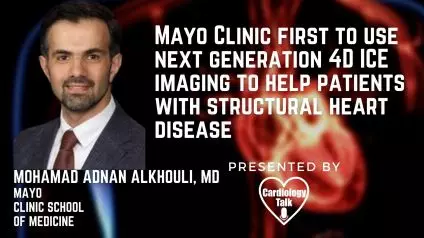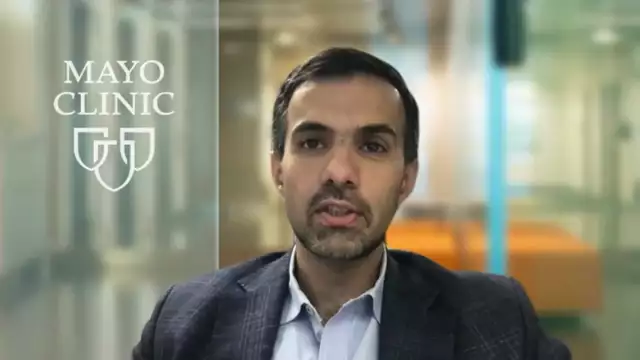Mohamad Adnan Alkhouli, MD @adnanalkhouli @Mayoclinic @MayoClinicCV #StructuralHeartDisease #HeartDisease #Cardiology...
Mohamad Adnan Alkhouli, MD, is a board-certified interventional cardiologist with expertise in structural heart interventions. He is also a Professor of Medicine at Mayo Clinic School of Medicine speaks about Mayo Clinic first to use next-generation 4D ICE imaging to help patients with structural heart disease.
Link to Article:
https://newsnetwork.mayoclinic.org/discussion/mayo-clinic-first-to-use-next-generation-4d-ice-imaging-to-help-patients-with-structural-heart-disease/
Mayo Clinic just became the first to utilize a next-generation 4D intracardiac echo (ICE) technology to guide heart surgeries including left atrial appendage closure, mitral valve replacement, and tricuspid valve regurgitation therapy in patients. The device can also assist doctors in doing surgeries without the need for general anesthesia.
Echocardiography is a noninvasive test that utilizes sound waves to provide comprehensive pictures of the size, shape, and function of the heart, as well as detailed images of the heart's valves. Echocardiography can also be used to assess the heart's blood volume as well as the pace and direction of blood flow.
Transthoracic echo and transesophageal echo are two types of echocardiograms that may be done on the surface of the chest (transthoracic echo) and via the esophagus (transesophageal echo). However, 4D echo takes things a step further by offering a comprehensive image of the heart from the inside.
The new 4D echo catheter, which is tiny enough to be put into the heart chambers, creates high-quality 3D moving pictures using sophisticated imaging technology. This technique allows doctors to observe structures and blood flow inside the heart in real-time, which is a significant advance over traditional intracardiac echo catheters, which can only provide 2D pictures.
Clinicians can benefit from this in-motion picture from inside the heart, especially in regions of the heart that are difficult to see with transthoracic or transesophageal echo. Interventional cardiac treatments such as left atrial appendage closure, mitral valve repair, and tricuspid valve regurgitation therapy can all benefit from 4D technology. Furthermore, the 4D echo does not necessitate the use of anesthesia, which is beneficial for individuals with sedative sensitivity.
Dr. Alkhouli completed the first set of in-person transcatheter interventions utilizing 4D ICE imaging at Mayo Clinic in June, and he's now working on developing standardized imaging methods for ICE-guided structural heart operations.




